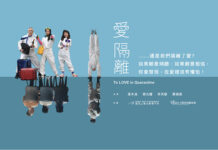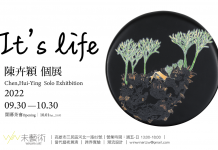逆棲:城市邊緣中的對話與重建─香港‧大阪‧台灣三第聯展
展覽地點:駁二藝術特區B6倉庫
展覽期程:2014/11/7-11/29
開放時間:週一至週四 10:00-18:00、週五六日及國定假日 10:00-20:00
進場方式:免票進場
展覽開幕:2014/11/7 14:00
臉書頁面:https://www.facebook.com/reverseniche
展覽內容 About:
「逆」字作為迎向、迎擊之意,具有抵抗及革命意味。「棲」則作為動物安居巢穴之棲居空間,在生物學中常以生態棲位(ecological niche),代表生物在環境中所佔據之地理空間並賴以維生的基本生命單位;各生物種類依其生活習性,繁殖、衍化與活動,建構出自身生命本質的生存空間。猶如人類為了生存而棲居於城市各個角落,因地置宜,生活就是在此時此地生長出來的。同Lewis Mumford所述,一個健全的城市皆由不同的社區(Neighborhood) 所構成,這些社區按照自身的各種需要,自然而然地發展出它的面貌,當中的生活設施、空間分佈,乃至商業或非商業性質的活動,皆因為當地人的生活習慣,以及人與人之間的聯繫互動所建立起來的社區空間。
在城市現代化的過程中,製造一種去除貧窮、創造資產累積的想像,許多人移居城市尋求晉身中產階級的機會。然而都市發展主義的社會裡,視覺化的想像總是掩蓋住都市長期存在的社會問題,排除、隔離、移民與貧窮人口的棲居之地。近年來則在都市規劃與土地分區劃分的命運下,被公權力強制拆除建造綠地、大樓與商場,或放任讓其自生自滅。這些被景觀(spectacle)所壟斷的都市處境,正隱含了將整體都市文化簡化為中產階級的純粹敘事。但部分藝術家卻開始試圖突破藝術與社會疏離內向藝術創作,轉為一組積極實踐,朝向一個與公眾連結的藝術關係與過程。因此以「逆棲」做為雙重意象的隱喻,不僅標誌現代城市發展下被排除的邊緣群體,一種兼具被拒斥在外的生命處境與其形成的抵抗生存模式,同時也作為關注這些生命狀態的藝術行動者,強調以基地發展一種長時間對話、參與式創作,來開啟有別於主流藝術生產的實踐。
本展覽以地方作為一種提問,透過半年的時間對三座城市與藝術組織進行田野調查,並以三組城市/藝術組織/社群的相互對話與行動,試圖呈現在特定都市發展脈絡下,這些尚未被歷史歸檔成文件的藝術行動作為溝通與連結的媒介,如何以不同面向來回應各自都市治理的背景,並企圖開展這些被排除,貧窮、少數、弱勢的城市文化?藝術家設計何種對話框架誘引、邀請參與這些社群,並以此作為搭建公共領域的橋樑?以及社會公共議題如何藉由藝術重新彰顯並且得以作為一種追尋進步的政治討論與實踐?
To “reverse” something implies engaging it with the intent to resist, and has connotations of revolution. While “niche” refers a space in which an animal can nest and take shelter. In the study of biology, the term “ecological niche” is often used to describe a geographical space and environment that an organism occupies and relies on for its sustenance. Organisms reproduce, diversify, and actively construct a space that is essential to personal survival. Similarly, humans construct their lives in various sections of a city to fulfill the necessities for their ways of life. Specific lifestyles evolve at a specific temporal and spatial nexus. As Lewis Mumford once described, a healthy city is composed of different neighborhoods. The unique appearance of these communities develops organically based on the needs of each community. From recreational facilities and spatial distribution, to commercial and non-commercial activities — all result from the living habits of its residents, while communal spaces are constructed from the interpersonal connections and interactions present in each community.
In the process of modernization, cities provide a fantasy that rejects poverty and creates material accumulation. People flock to cities in search of opportunities to join the ranks of the middle class. However, in a society governed by doctrines of urban development, this visual fantasy ultimately conceals long-standing urban social problems, as well as excludes and isolates the spaces inhabited by migrant and impoverished populations. In recent years, with their fate decided by urban planning and zoning, these spaces face being forcibly torn down by governments to build parks, high rises or marketplaces, or else are left to fend for their own survival. The urban contexts that have been monopolized by landscaping (spectacle) conceal the pure narrative that reduces the overall urban culture as one of middle class.
As mutual cooperation between art and commerce fully plays out, artists have begun to attempt inwardly focused artistic creations that are alienated from society; a transformation into a set of proactive and practical artistic relationships and processes of public connectivity. Hence, a “reverse niche” has a dual meaning, not only symbolizing the exclusion and resistance undertaken for survival by groups marginalized and disadvantaged in the process of urban development; but also highlighting the works created by art activists concerned with these living conditions that emphasize the development of a base for long-term dialogue and participatory creativity which will initiates an alternative practice of art production outside of the mainstream.
This project will be exhibited in the specific context of urban development. These acts of artistic activism that have not yet been categorized by history have become a conduit for communications and connections. How do we respond to and rebuild the urban culture of the excluded, the poor, the minority, and disenfranchised? What types of enticing framework for dialogue can artists construct that would invite the participation of these groups and become a bridge to rebuild the public arena? And how can art highlight social public issues in order to move toward a progressive political discussion and practice?
展覽活動Event Schedule:
一 、11/9 藝術家座談會 Artists Talk(中日翻譯)
時間Time : 11/9 (Sun.) 14:00~17:00
地點Venue:高雄 駁二藝術特區B6倉庫
主持:柯念璞 Ko Nien-pu(策展人 Curator)
講者 Speakers:
李俊峰 Lee Chun Fung (香港活化廳成員 /藝術家 Hong Kong / Woofer Ten / Artist )
上田假奈代 Kanayo Ueda (日本ココルーム成員 /藝術家 Osaka / Coco room / Artist )
倪祥 Ni Hsiang ( 高雄台灣影音展演藝術產業工會成員Taiwan Kaohsiung / Taiwan Studio, Exhibition and Arts Labor Union / Artist )
與談人Guests:
高俊宏Kao,Jun-Honn (藝術家 Artist)
葉振宇Yeh, Chen-Yu(料理最前線成員, 藝術家 Cooking at the Frontline ,Artist )
二、 11/15 (Sat.) 「人核聯盟:諸眾網絡東亞篇-東亞的藝術行動化」座談會 Talk(中日翻譯)
時間Time : 11/15 (Sat.) 14:00
地點Venue:高雄 駁二藝術特區B6倉庫
講者Speaker:江上賢一郎 Kenichiro Egami(日本/獨立研究者 Independent Researcher)
主持:柯念璞 Ko Nien-pu(策展人 Curator )
三 、11/16 (Sun.) 《鐵怒沿線-三谷》紀錄片播放 Filming Event)
時間Time : 11/16 (Sun.) 12:00
地點Venue:高雄 駁二藝術特區B6倉庫
映後座談 Talk:
講者Speaker:陳彥楷 Benny Chan (香港紀錄⽚工作者)
與談人 Guest: 陳劍青 Chan,Kim Ching(香港本土研究社研究員、地理學者)
電影內容 About:
《鐵怒沿線-三谷》
製作:菜園村支援組、影行者
拍攝剪接:陳彥楷
語言:廣東話/中英文字幕
2012/香港/DV/310分鐘/彩色
2010年香港反高鐵護菜園一役後,菜園村的命運如何?當日萬人站出來為菜園村抗爭,立法會通過高鐵撥款後,抗爭彷彿告一段落,但菜園村村民的抗爭其實尚未完結,而是轉上了自力搬村的艱辛路上。2011年,在爭取復耕牌以可在自購農地上建屋的的半年中,村民同時開始新村的規劃,要不要有馬路,誰住在誰旁邊,誰住在這誰住在那,由村頭到村尾,每間屋的設計,污水的處理,自有地、農地與公家地的比例等等等,一蓋集體討論決定。同時間,政府宣佈村民十一月要離開。另一方面,因自購土地相關路權的問題,村民擔心即使買了地卻未能可以通往起屋而躊躇。時間逼切,這是團結的機 會,亦有潰散的危機,踏入十一月,政府開始進場拆屋,村民開始了每日巡守、阻擋怪手,爭取先建後搬的日子。直到2011年5月,菜園村村民離開住了幾十年 的家園,搬到自購農地上的臨時屋,繼續自力建村的路途。是甚麼讓村民面對重重難關,仍然堅持、團結,沒有被擊潰?眼下新界東北村落形勢日益險峻,菜園村的經驗,示範了自主搬村,亦告訴我們真實的抗爭的漫長,一切仍需繼續關注。
四 、11/23 (Sun.) 黃耀雄 「城市之島生存之道 」+ 譯之藝「微薄之力拔傷心 」
時間Time : 11/23 (Sun.) 12:00
地點Venue:高雄 駁二藝術特區B6倉庫
講者Speakers: 黃耀雄、譯之藝
五、11/09 (Sun.) 11/22 (Sat.) 11/23 (Sun.)「該死填心卡之不死心還在(占卜活動) 」「該死填心卡之江洋大盜(占卜活動) 」「 該死填心卡之不問愛情(占卜活動) 」
時間Time : 11/09 (Sun.) 11/22 (Sat.) 11/23 (Sun.) 14:00
地點Venue:高雄 駁二藝術特區B6倉庫
藝術家Artist:徐敏思 Hsu,Min-Szu
展覽與相關活動主辦單位:國家文化藝術基金會 高雄市政府文化局
展覽與相關活動贊助單位:國家文化藝術基金會







